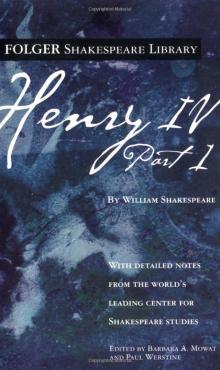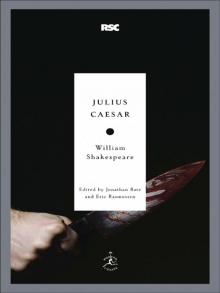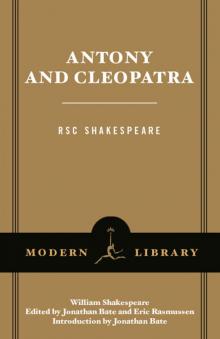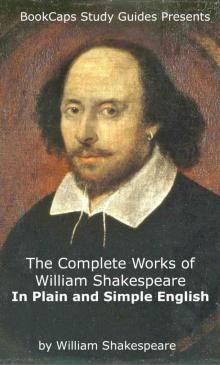- Home
- William Shakespeare
Richard II
Richard II Read online
The RSC Shakespeare
Edited by Jonathan Bate and Eric Rasmussen
Chief Associate Editors: Héloïse Sénéchal and Jan Sewell
Associate Editors: Trey Jansen, Eleanor Lowe, Lucy Munro, Dee Anna Phares
Richard the Second
Textual Editing: Eric Rasmussen
Introduction and Shakespeare’s Career in the Theater: Jonathan Bate
Commentary: Ayako Kawanami and Héloïse Sénéchal
Scene-by-Scene Analysis: Esme Miskimmin
In Performance: Maria Jones (RSC stagings), Peter Kirwan (overview)
The Director’s Cut (interviews by Jonathan Bate and Kevin Wright):
Claus Peymann and Michael Boyd
Playing Richard: Fiona Shaw
Editorial Advisory Board
Gregory Doran, Chief Associate Director, Royal Shakespeare Company
Jim Davis, Professor of Theatre Studies, University of Warwick, UK
Charles Edelman, Senior Lecturer, Edith Cowan University, Western Australia
Lukas Erne, Professor of Modern English Literature, Université de Genève, Switzerland
Akiko Kusunoki, Tokyo Woman’s Christian University, Japan
Jacqui O’Hanlon, Director of Education, Royal Shakespeare Company
Ron Rosenbaum, author and journalist, New York, USA
James Shapiro, Professor of English and Comparative Literature, Columbia University, USA
Tiffany Stern, Professor of English, University of Oxford, UK
2010 Modern Library Paperback Edition
Copyright © 2007, 2010 by The Royal Shakespeare Company
All rights reserved.
Published in the United States by Modern Library, an imprint of The Random House Publishing Group, a division of Random House, Inc., New York.
MODERN LIBRARY and the TORCHBEARER Design are registered trademarks of Random House, Inc.
“Royal Shakespeare Company,” “RSC,” and the RSC logo are trademarks or registered trademarks of The Royal Shakespeare Company.
The version of Richard II and the corresponding footnotes that appear in this volume were originally published in William Shakespeare: Complete Works, edited by Jonathan Bate and Eric Rasmussen, published in 2007 by Modern Library, an imprint of The Random House Publishing Group, a division of Random House, Inc.
eISBN: 978-1-58836-877-5
www.modernlibrary.com
v3.1
CONTENTS
Cover
Title Page
Copyright
Introduction Lyric Tragedy
The Essex Connection
The King’s Two Bodies
About the Text
Key Facts
The Life and Death of King Richard the Second List of Parts
Textual Notes
Quarto Passages That Do Not Appear in the Folio
Oaths from the Quarto
Scene-by-Scene Analysis
Richard II in Performance: The RSC and Beyond Four Centuries of Richard II: An Overview
At the RSC
The Director’s Cut: Interviews with Claus Peymann and Michael Boyd
Playing Richard: An Interview with Fiona Shaw
Shakespeare’s Career in the Theater Beginnings
Playhouses
The Ensemble at Work
The King’s Man
Shakespeare’s Works: A Chronology
Kings and Queens of England: From the History Plays to Shakespeare’s Lifetime
The History Behind the Histories: A Chronology
Further Reading and Viewing
References
Acknowledgments and Picture Credits
The Modern Library
INTRODUCTION
LYRIC TRAGEDY
In the second act of The Life and Death of King Richard the Second, the queen weeps after her husband departs to fight a war in Ireland. She is comforted by Bushy, one of the king’s courtiers:
Each substance of a grief hath twenty shadows,
Which shows like grief itself, but is not so.
For sorrow’s eye, glazèd with blinding tears,
Divides one thing entire to many objects,
Like perspectives, which rightly gazed upon
Show nothing but confusion: eyed awry
Distinguish form. So your sweet majesty,
Looking awry upon your lord’s departure,
Find shapes of grief, more than himself to wail,
Which, looked on as it is, is naught but shadows
Of what it is not. Then, thrice-gracious queen,
More than your lord’s departure weep not. More’s not seen;
Or if it be, ’tis with false sorrow’s eye,
Which for things true weeps things imaginary.
Tears glaze the eyes and distort our vision, fragmenting what we see. The emotions are at odds with the work of reasoning. The “substance” of the queen’s grief—Richard himself—is away in Ireland. What she holds in her head is a “shadow,” or rather many shadows, of him. When we are away from those we love, we fear that something bad may be happening to them. But the pictures of those bad things are not a reality: they are “things imaginary.”
Strong emotions and imagined images are themselves the substance not only of grief and foreboding, but also of fiction and theater. The Richard and the queen whom we witness on stage, or conjure into our minds in the act of reading, are “shadows” rather than substances. They are brought into being by performance, by the impersonation of roles, by playacting. When we think more deeply about the roles of king and queen in historical reality, we might consider this question of “substance” and “shadow” further. Which is the substance and which the shadow? The office or the man? The king in his capacity as embodiment of the nation and God’s representative upon earth assumes his role by means of costumes and props (robe, crown, scepter, orb, throne on which to sit) and of a highly theatrical ceremony (coronation, anointing, ritualized words, the blessing of the Church). Is there some sense in which that role is no more than a performance, in which a king is an actor-like “shadow,” whereas the true “substance” is the flesh-and-blood body of the mortal individual whose name is Richard? Or is it the other way around: does Richard become a mere “shadow” of himself when he loses the name of king?
These are some of the questions with which the Shakespeare of Richard II was fascinated. The play is the most static and inward-looking of his histories, and perhaps for that reason it has always been one of the less frequently staged. Yet its visual images are striking: a shattered mirror, a king stripped of everything and mired in a dark prison cell. And its verbal music is of startling beauty. The exploration of shadows and substances, selves and roles, public and private, is conducted in intensely lyrical, formal language. Bushy’s speech is typical. It proceeds in the form of a complex, balanced argument, rendered vivid by poetic imagery, such as the figure of the “perspective” glass, a kind of distorting mirror. And it is made memorable for both the actor learning the lines and the audience hearing the play by the resolution in rhyme at the close and by the beat of the iambic pentameter throughout. The pattern is of unstressed followed by stressed syllables five times over, with occasional reversals for variety and surprise. “Find shápes of gríef, móre than himsélf to wáil.” The contrast between the “shapes of grief” and Richard “himself” is highlighted by the stress on “more,” which breaks up the regular rhythm that would lead us to expect a stress on “than.”
Richard II is the most poetic of Shakespeare’s history plays. The extreme formality of its rhetoric and verse forms perhaps represents the high point, and the end point, of his early style. Hereafter, his forms will become more fluid, less formal, more conversational. He will use less rhyme. Richa
rd II is indeed a very rare example of Shakespeare writing a play entirely in verse. In the history plays he had written before—the Henry VI sequence and Richard III—and those he would go on to write soon after—the two parts of Henry IV and Henry V—the march of verse-speaking kings and courtiers is peppered with interruptions from the prose voices of the commoners. But in this play even the gardeners speak in polished and elaborate verse as they make an allegorical comparison between the overgrown garden and the kingdom run to seed.
THE ESSEX CONNECTION
The 1580s was a decade of war in Flanders, where the English fought with the Dutchmen against the might of Catholic Spain. The 1590s was a decade of war in Ireland, where the Earl of Essex struggled in vain to quell the rebellion of the irrepressible Hugh O’Neill, Earl of Tyrone. For the first half of his career, all through the last years of old Queen Elizabeth’s reign, Shakespeare was a war poet. He had an obsessive interest in military life. Richard III, Titus Andronicus and all his sons, Othello, Iago and Cassio, Macbeth and the other Thanes, Hamlet’s armored father and young Fortinbras, King Lear, Julius Caesar, Brutus and Cassius, Mark Antony and Octavius Caesar, Coriolanus, Alcibiades, Henry IV and Sir John Falstaff, dozens of dukes, earls, and knights in the ranks of the history plays, Benedick and his colleagues in Much Ado About Nothing: all are soldiers, some by profession and others by force of circumstance. All are defined to a greater or lesser degree by the hunger to fill the vacuum left by battle and by war as the defining male action (which is not to say that Shakespeare failed to create a good line in female soldiers—Queen Margaret, Tamora Queen of Goths, Joan of Arc, Cleopatra, Cordelia and her sisters). But the most famous of all his soldiers would be King Henry V.
Having completed a sequence of four plays about the Wars of the Roses, then the rise and fall of Richard III, ending with the establishment of the Tudor dynasty following the battle of Bosworth Field, Shakespeare turned his mind to the preceding period of English history. In writing Richard II, which inexorably moves toward Henry Bullingbrook’s ascent of the throne as King Henry IV, Shakespeare was setting himself up for another cycle of plays that would inevitably climax in the short but triumphant reign of Bullingbrook’s son, King Henry V, victor over the French.
At the beginning of the fifth act of King Harry’s play, the Chorus describes his triumphal procession through the streets of London upon his return to England after his astonishing victory on the field of Agincourt. In the course of this speech, Shakespeare makes the most open and striking topical allusion anywhere in his works:
… But now behold,
In the quick forge and working-house of thought,
How London doth pour out her citizens.
The mayor and all his brethren in best sort,
Like to the senators of th’antique Rome,
With the plebeians swarming at their heels,
Go forth and fetch their conqu’ring Caesar in:
As by a lower but by loving likelihood,
Were now the general of our gracious empress,
As in good time he may, from Ireland coming,
Bringing rebellion broachèd on his sword,
How many would the peaceful city quit,
To welcome him? Much more, and much more cause,
Did they this Harry.…
When these lines were first spoken on the stage of the newly built Globe Theatre in the summer of 1599, few audience members could have had any doubt what the Chorus was talking about. The “gracious empress” is Queen Elizabeth and “the general” is the Earl of Essex—the queen’s sometime favorite, embodiment of the martial code of chivalry and honor, leader of the war party in the long-standing debate at court over how to proceed in relation to Spain. At this moment he was leading his campaign against Tyrone in Ireland. The allusion is unmistakable.
Shakespeare does not let go of his habitual political caution. It is a “likelihood,” not a certainty, that Essex will bring rebellion broached on his sword and it is an open question how many people will turn out to cheer him. But there is still a boldness in the comparison. When “conqu’ring Caesar” crossed the Rubicon and returned to Rome, there was talk of him seizing an imperial crown and Brutus and his friends had to take drastic action to save the republic. Conversely, there were moments in late Elizabethan court politics when exasperation with the old childless queen’s refusal to name an heir led some to wonder whether there might not be a future for England in some form of Roman-style republican government, with the Privy Council serving as its Senate and a strong man such as Essex in the role of Consul. Shakespeare wrote Julius Caesar that same year of 1599.
But Richard II, written a few years before, is another powerful shadow behind the allusion to Essex and Tyrone. After all, that too is a play in which an Irish war is of pivotal importance in demonstrating an English monarch’s failing grip on the handle of national power. Essex was often perceived as a Henry Bullingbrook figure, a no-nonsense military man greeted with acclaim whenever he rode through the streets of London, as he did before heading off on his French campaign in 1591. What is more, he claimed descent from Bullingbrook, which made some people worry that he had aspirations to the throne himself.
Shakespeare seems to have been aware of the Essex/Bullingbrook identification. At the climax of Richard II, he describes Bullingbrook in London, portraying him in a manner that draws on the public image of Essex:
… the duke, great Bullingbrook,
Mounted upon a hot and fiery steed
Which his aspiring rider seemed to know,
With slow but stately pace kept on his course.
While all tongues cried ‘God save thee, Bullingbrook!’
You would have thought the very windows spake,
So many greedy looks of young and old
Through casements darted their desiring eyes
Upon his visage, and that all the walls
With painted imagery had said at once
‘Jesu preserve thee! Welcome, Bullingbrook!’
Whilst he, from one side to the other turning,
Bareheaded, lower than his proud steed’s neck,
Bespake them thus: ‘I thank you, countrymen’,
And thus still doing, thus he passed along.
There is no precedent in Shakespeare’s historical sources for this striking image of Bullingbrook’s popularity. It has been invented in order to establish a contrast with the deposed Richard, who follows in after with no man crying, “God save him,” and dust and rubbish being thrown out of the windows on his head. Shakespeare thus illustrates the process of the two cousins being like two buckets, one descending down a well as the other rises up. He also highlights the fickleness of the common people. At the same time, the close concentration on Bullingbrook’s management of his proud horse makes a point about his strong statecraft: good horsemanship was a traditional image of effective government. This sequence in the play was explicitly quoted apropos of Essex in more than one political intervention of the period.
In the Henry IV plays, however, Shakespeare conspicuously dropped the image of Bullingbrook, now king, as a popular figure. Far from showing himself among his people and exemplifying strong government, Henry IV skulks in his palace as his kingdom disintegrates around him, the penalty for his usurpation of his throne. The horseman and populist is his son Hal, who goes on to become Henry V, leading his men to triumph in battle. The description of his return to London after the victory at Agincourt clearly echoes that of the speech about his father at the corresponding moment in Richard II. As so often in Shakespeare, the wheel of history comes full circle.
Regardless of Shakespeare’s semiconcealed political intentions in making the allusion—one gets the sense that he is only somewhere a little over halfway to being an Essex man—it is easy to see how the two remarkably similar passages in Richard II and Henry V could have been perceived as pro-Essex. This perception drew him into exceptionally dangerous political territory. Things came to a head in 1601 and if they had
gone just a little differently, his career—and indeed his life—would have come to an abrupt end. He could have found himself in the Tower of London or even in the hands of the public executioner.
How do we measure the worth of our rulers? By the justice of their claim to power or the quality of their actions at the helm of state? King Richard II has wasted public funds and is under the influence of self-serving flatterers. He has arranged the murder of his uncle, Thomas of Woodstock. Yet he is the rightful king, anointed by God. Are his failures so great that it will be in the interest of the state to get rid of him? Or is the removal of a king from his throne a crime against God and the order of nature? In the central scene of Shakespeare’s play, the king is forced to participate in a ceremony in which he formally removes himself from the throne. Deposition was a matter so sensitive that a large segment of this scene may have been censored out of the early printed editions of the play. And in the last years of Queen Elizabeth’s reign, the contemporary resonances of the story of Richard II’s deposition were so powerful that the followers of the Earl of Essex took a particularly close interest in Shakespeare’s play.
The Essex faction, including the young Earl of Southampton to whom Shakespeare had dedicated his narrative poems Venus and Adonis and The Rape of Lucrece, considered the old queen to be as bad as Richard. Like him, they murmured, she was surrounded by flatterers, raising too many taxes, and conducting a disastrous Irish policy. Could she be ripe for Richard’s bloody fate?
Early in February 1601, Sir Charles Percy, a descendant of the Percy family who had joined with Bullingbrook to overthrow King Richard, had a bright idea. Along with Southampton, he had joined the group of aristocratic malcontents who hung around Essex House and voiced their frustration at Elizabeth’s policies and preferments. The Earl of Essex himself was plotting to march against the court and confront the queen with demands for change. Percy, together with Lord Mounteagle and one or two others, slipped over the river to the Globe. They asked the players to put on a special production of Richard II. Shakespeare’s men were reluctant: the play was so old and had not been staged for so long that there would be little or no audience. Essex’s gentlemen responded with an offer that the players couldn’t refuse: an immediate down payment of forty shillings to supplement their takings. Lines were relearned overnight and the next afternoon, the show was staged, with a large number of Essex’s followers prominent in the audience.

 Romeo and Juliet
Romeo and Juliet As You Like It (Folger Shakespeare Library)
As You Like It (Folger Shakespeare Library) Hamlet
Hamlet Richard II (Folger Shakespeare Library)
Richard II (Folger Shakespeare Library) Macbeth
Macbeth Henry V
Henry V The Winter's Tale
The Winter's Tale The Taming of the Shrew
The Taming of the Shrew The Comedy of Errors
The Comedy of Errors King Lear (Folger Shakespeare Library)
King Lear (Folger Shakespeare Library) Twelfth Night
Twelfth Night Othello
Othello The Two Gentlemen of Verona
The Two Gentlemen of Verona Henry IV, Part 1 (Folger Shakespeare Library)
Henry IV, Part 1 (Folger Shakespeare Library) King John/Henry VIII (Signet Classics)
King John/Henry VIII (Signet Classics) The Tempest
The Tempest Titus Andronicus (Dover Publications)
Titus Andronicus (Dover Publications) A Midsummer Night's Dream
A Midsummer Night's Dream Antony and Cleopatra (Arden Shakespeare: Third Series)
Antony and Cleopatra (Arden Shakespeare: Third Series) The Oxford Shakespeare: Henry IV, Part 2 (Oxford World's Classics)
The Oxford Shakespeare: Henry IV, Part 2 (Oxford World's Classics) Much Ado About Nothing (Arden Shakespeare: Third Series)
Much Ado About Nothing (Arden Shakespeare: Third Series) All's Well That Ends Well
All's Well That Ends Well Titus Andronicus & Timon of Athens
Titus Andronicus & Timon of Athens Richard III (Modern Library Classics)
Richard III (Modern Library Classics) Coriolanus
Coriolanus srsly Hamlet (OMG Shakespeare)
srsly Hamlet (OMG Shakespeare) The Merchant of Venice
The Merchant of Venice Richard III
Richard III Richard II
Richard II Pericles
Pericles As You Like It
As You Like It Cymbeline
Cymbeline Alls Wel that ends Well
Alls Wel that ends Well YOLO Juliet
YOLO Juliet A Midsummer Night #nofilter
A Midsummer Night #nofilter Love's Labour's Lost
Love's Labour's Lost Much Ado About Nothing
Much Ado About Nothing Romeo & Juliet & Vampires
Romeo & Juliet & Vampires The Arden Shakespeare Complete Works
The Arden Shakespeare Complete Works Julius Caesar
Julius Caesar Five Revenge Tragedies: The Spanish Tragedy, Hamlet, Antonio's Revenge, The Tragedy of Hoffman, The Revenger's Tragedy (Penguin Classics)
Five Revenge Tragedies: The Spanish Tragedy, Hamlet, Antonio's Revenge, The Tragedy of Hoffman, The Revenger's Tragedy (Penguin Classics) Macbeth #killingit
Macbeth #killingit The Oxford Shakespeare: The Complete Works
The Oxford Shakespeare: The Complete Works Hamlet, Prince of Denmark (Collins edition)
Hamlet, Prince of Denmark (Collins edition) King John & Henry VIII
King John & Henry VIII Henry IV, Part 2
Henry IV, Part 2 Complete Plays, The
Complete Plays, The The Sonnets and Other Poems
The Sonnets and Other Poems Antony and Cleopatra
Antony and Cleopatra Henry IV, Part 1
Henry IV, Part 1 Is This a Dagger Which I See Before Me?
Is This a Dagger Which I See Before Me? The Complete Works of William Shakespeare In Plain and Simple English (Translated)
The Complete Works of William Shakespeare In Plain and Simple English (Translated) The Sonnets
The Sonnets